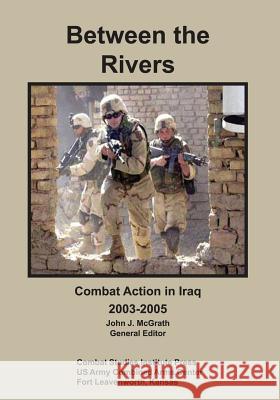Between the Rivers: Combat Action in Iraq, 2003-2005 » książka
Between the Rivers: Combat Action in Iraq, 2003-2005
ISBN-13: 9781494437930 / Angielski / Miękka / 2013 / 142 str.
Making history useful to the reader - this is one of the missions of the Combat Studies Institute. We strive to produce works that recount historical events to inform decision makers and to enable experiential learning. This collection of events put together by John McGrath, which occurred in Iraq during the 2003-2005 timeframe, addresses that mission. The authors largely used primary source material - interviews and unit histories - to develop these vignettes and in doing so have made the works relatable not only to Soldiers who experienced similar situations but to any reader who can imagine themselves having to function in these types of situations. We honor those involved in these actions and hope that by recounting their stories others may not only recognize them for their service but may also learn and grow from their experience. This work is the continuation and revision of a project started in 2006 with the publication of "In Contact " by the Combat Studies Institute. The original concept was to present a series of military vignettes in a style similar to the widely used case-study methodology commonly found in military literature. The final version of "Between the Rivers," instead of following this strict case-study format, presents combat action vignettes as narrative accounts of the various types of actions challenging combat leaders in Iraq in 2003-2005. The present volume lies directly within the tradition of these predecessor works on small-unit actions. Since the fall of2001, the United States Army, along with the other American armed services, has been engaged in military actions in Iraq and Afghanistan. Because the current conflict has so many different fronts and facets, no handful of small- unit case studies could do justice to such a complex tapestry of events. This book thus represents a volume that showcases the American soldier in combat operations within the context of the Global War on Terrorism/The Long War. This series of five case studies is drawn from events in Iraq. Four of the studies discuss combat operations within a counterinsurgency framework at the company and battalion levels. The final case study presents a deployment dilemma facing a brigade-level task force commander when he was asked to replace a whole division in the same geographical space. In each case, the story is derived from oral interviews and key documents and is fully annotated. The primary purpose for presenting these vignettes is to provide a vicarious education in what future participants will face as the War on Terrorism continues and beyond.
Zawartość książki może nie spełniać oczekiwań – reklamacje nie obejmują treści, która mogła nie być redakcyjnie ani merytorycznie opracowana.











